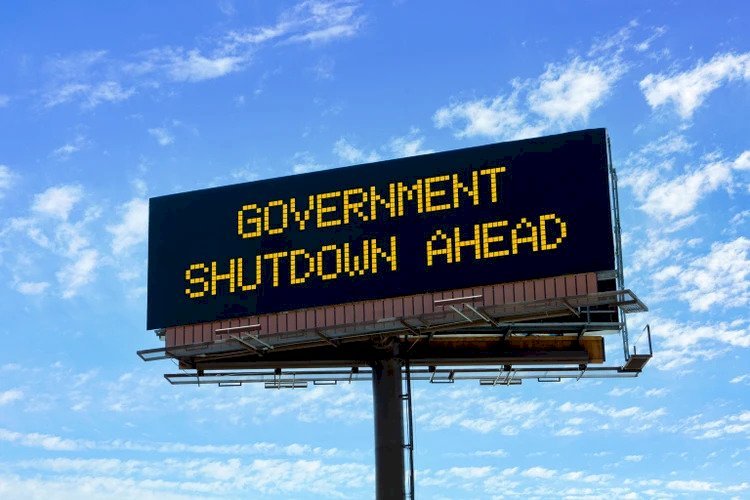Wall Street Braces for Shutdown Showdown Amid Historic Valuation Warning
Washington gridlock pushes the US toward a shutdown deadline, threatening data releases and market stability. Learn why the 217% 'Buffett Indicator' and political chaos make this moment different for the S&P 500.

Washington gridlock is once again casting a shadow over Wall Street as the federal government barrels toward a potential shutdown deadline this Wednesday. President Donald Trump is scheduled to meet with top congressional leaders today in a last-minute attempt to avert the funding lapse, but the political divisions are sharp, leaving investors weighing the short-term chaos against the deeper risks signaled by recently retreating stock prices and historic market valuations.
The Political Brink: A Shutdown Showdown
The immediate concern is the absence of a stopgap funding bill, which must be passed by Wednesday to keep federal agencies open. The political impasse is centered on healthcare, with Democrats pushing for extensions to Affordable Care Act insurance subsidies, a debate Republican leaders insist should be delayed until the shutdown threat is averted. President Trump has dramatically raised the stakes, issuing an unprecedented warning of "mass firings" of federal workers should Congress fail to act—a threat that goes beyond the standard furloughs seen in previous funding lapses and injects greater uncertainty into the economic outlook.
Historically, markets have maintained a remarkably stoic posture during government shutdowns. Analysts often point out that past closures, even the longest in U.S. history (35 days in late 2018/early 2019), have had minimal lasting impact on equity performance, with the S&P 500 often finishing shutdowns higher.
However, the consensus this time is notably split. While many financial institutions, citing historical data, suggest investors "shouldn't worry," the broader economic landscape is leaving some deeply concerned. The risk, as experts warn, is not the shutdown itself, but the timing: this potential political dysfunction piles onto existing jitters concerning high valuations, sticky inflation, and a softening labor market. As one analyst noted, the uncertainty introduced by this elevated political risk "can lead to a short-term uptick in volatility, especially after a long stretch of strong returns."
Compounding the political climate, the President recently targeted Federal Reserve Chair Jerome Powell on social media with a cartoon depicting his firing—the latest in a series of highly public jabs at the central bank. This open antagonism toward monetary policy independence adds another layer of instability, as Cleveland Fed President Beth Hammack acknowledged this morning, calling it "a challenging time for monetary policy."
Retreat and Ratios: The Market’s Valuation Reality Check
The shutdown threat arrives just as the U.S. stock market showed its first signs of vulnerability after a stunning multi-week rally that pushed indices to all-time highs. Last week, both the benchmark S&P 500 and the small cap-focused Russell 2000 finished in the red, with the Russell snapping a seven-week winning streak. This retreat suggests that market participants are already becoming risk-averse, focusing on the fundamental health of the economy rather than political drama.
The recent pullback highlights a far more fundamental concern: valuation. According to data, the total value of public U.S. companies relative to the nation’s Gross Domestic Product (GDP) has climbed to an unprecedented 217%. This ratio, widely known as the "Buffett Indicator" after legendary investor Warren Buffett endorsed it as "probably the best single measure of where valuations stand at any given moment," is sending a clear, historical warning.
In 2001, Buffett famously warned that if this ratio approached 200%, investors were "playing with fire." The indicator touched roughly 150% during the peak of the 2000 dot-com bubble, and reached 172% during the post-pandemic liquidity surge of 2021. The current reading of 217% places the market in uncharted territory, suggesting that stock prices are dramatically outpacing the underlying economic output of the country.
While some analysts argue the metric is less relevant today due to the global nature of U.S. technology giants—many of which drive the high market capitalization but whose global earnings may not be fully captured by domestic GDP—the historical correlation between high readings and subsequent poor long-term returns remains a potent deterrent for cautious investors. The recent market decline could be an initial move toward the mean, independent of, but exacerbated by, the chaos in Washington.
Data Dependency and Delay: The Fed's Blind Spot
The impending shutdown could have its most significant, albeit temporary, impact by disrupting the flow of critical economic data the Federal Reserve depends on to set interest rates.
This week was scheduled to deliver a crucial slate of employment statistics, including:
-
Tuesday: S&P/Case-Shiller home price index and consumer confidence.
-
Wednesday: ADP Employment Survey (private data, generally unaffected) and JOLTS Job Openings (August).
-
Thursday: Weekly jobless claims.
-
Friday: Nonfarm Payrolls and the full Jobs Report for September.
The data released by government agencies—specifically the JOLTS report and the Friday Jobs Report from the Bureau of Labor Statistics (BLS)—would be suspended in the event of a shutdown, as statistical agencies are deemed "nonessential." Given the Fed’s recent policy adjustments, which have hinged on signs of labor market softening (with expectations for a September nonfarm payroll gain around 51,000, slightly more than the breakeven rate of 40K required to hold the unemployment rate steady), a delay in this data is highly problematic.
A prolonged shutdown could mean the Federal Open Market Committee (FOMC) heads into its next policy meeting without fresh, key inflation and employment figures. This data void increases the risk of market uncertainty and ties the Fed’s hands, potentially compelling policymakers to delay a planned rate cut or other monetary action.
Beyond the Headlines: Other Key Market Drivers
While Washington dominates the headlines, investors are also tracking key developments elsewhere:
AI Regulation: Lawmakers are giving increasing attention to the "dark underbelly" of the artificial intelligence boom, particularly non-consensual, AI-generated pornography created through "nudify" sites. The focus on regulation in this area, while socially significant, highlights the growing government scrutiny that tech giants powering the recent market rally may face.
Aviation Safety: Innovation continues in critical sectors, with Honeywell testing new cockpit alert systems in a Boeing 757 to give pilots more reaction time and avoid close-call airport situations that have been a recurring safety concern.
Consumer Trends: The market continues to chase viral consumer trends, as the "dirty soda" craze—pop-based drinks with flavored syrups and cream—expands far beyond its Utah origins. Major players from PepsiCo to TGI Fridays are joining the trend, underscoring the shift in consumer demand and the pursuit of niche growth areas.
Looking ahead, investors will pivot from political risk to corporate performance, with Carnival earnings due before the bell on Monday and Nike earnings after the bell on Tuesday, kicking off a busy week of corporate and economic reports. However, until Congress acts, the potential for a disruptive government shutdown—coupled with a market valuation last seen before historic downturns—remains the primary and most volatile concern.
Sources:
- Historical S&P 500 performance during and after shutdowns, with a long-term investment perspective.
- Analysis of the economic and labor impacts, including the effect on GDP, furloughed workers, and financial data publication.
- Investor guidance, historical market data during shutdowns, and the potential impact on credit ratings.

 Selina Smith
Selina Smith 









![AutoZone Business Hours [2025]: Complete Guide to Store Times, Holidays & Tips](https://statesidemagazine.com/uploads/images/2025/06/image_140x98_6852d31a1eb7b.jpg)





